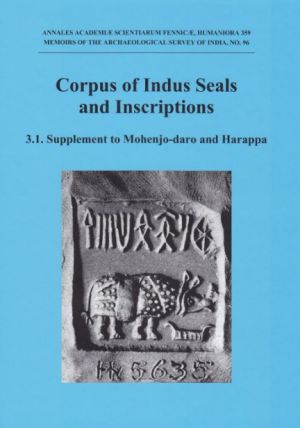Shahr-i Sokhta; Mundigak; Mehrgarh, Nausharo, Sibri, Dauda-damb; Chanhudaro; Ahar, Balathal, Gilund; Kalibangan; Rojdi. Ed. Asko Parpola, B. M. Pande and Petteri Koskikallio, in collaboration with Massimo Vidale & Alessandra Lazzari; Catherine & Jean-Francois Jarrige, Gonzague Quivron & Helene Tromparent
Suomalainen Tiedeakatemia
Annales Academiae Scientiarum Fennicae. Humaniora 383
ISSN 1239-6982
The Corpus of Indus Seals and Inscriptions (CISI) has as its purpose to make available for research, in as good images as possible, all seals and inscriptions relating to the Indus Civilization, which flourished in Pakistan and northwestern India c. 2600-1900 BCE. This material is fundamental for the research of the poorly understood script, language, and religion of the Indus Civilization, and a major outlet for its art. The seals and other types of inscribed artefacts are important also for the study of the Harappan social, political and economic organization, including administrative practices, external cultural contacts, internal trade and various techniques, such as seal carving. The CISI is published by the Finnish Academy of Science and Letters, with the financial assistance of UNESCO and in collaboration with the Archaeological Survey of India, the Department of Archaeology and Museums, Government of Pakistan, and numerous excavation projects and museums.













